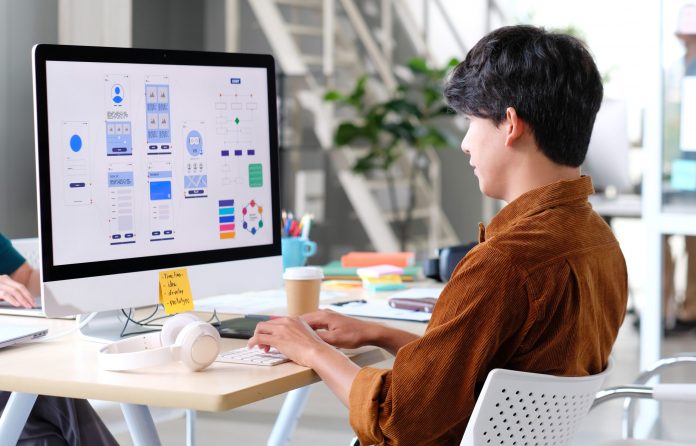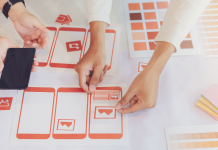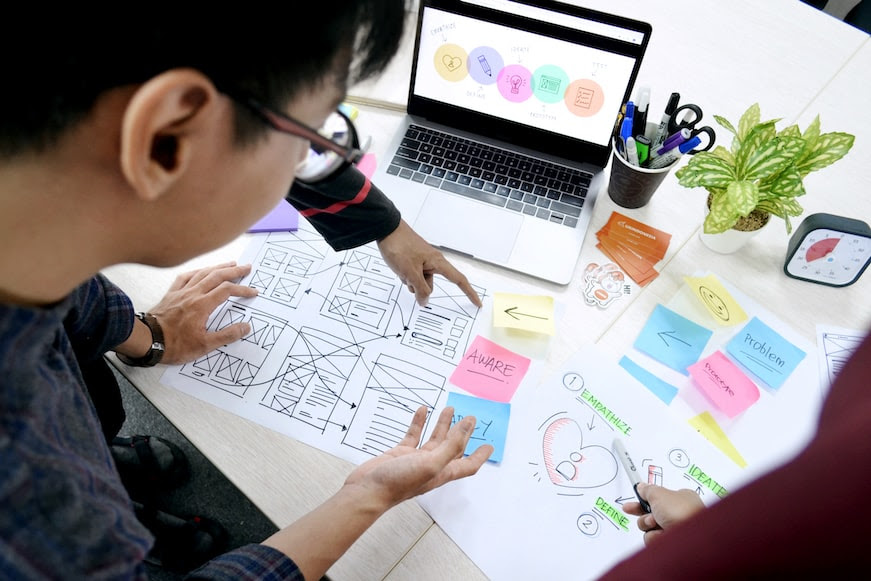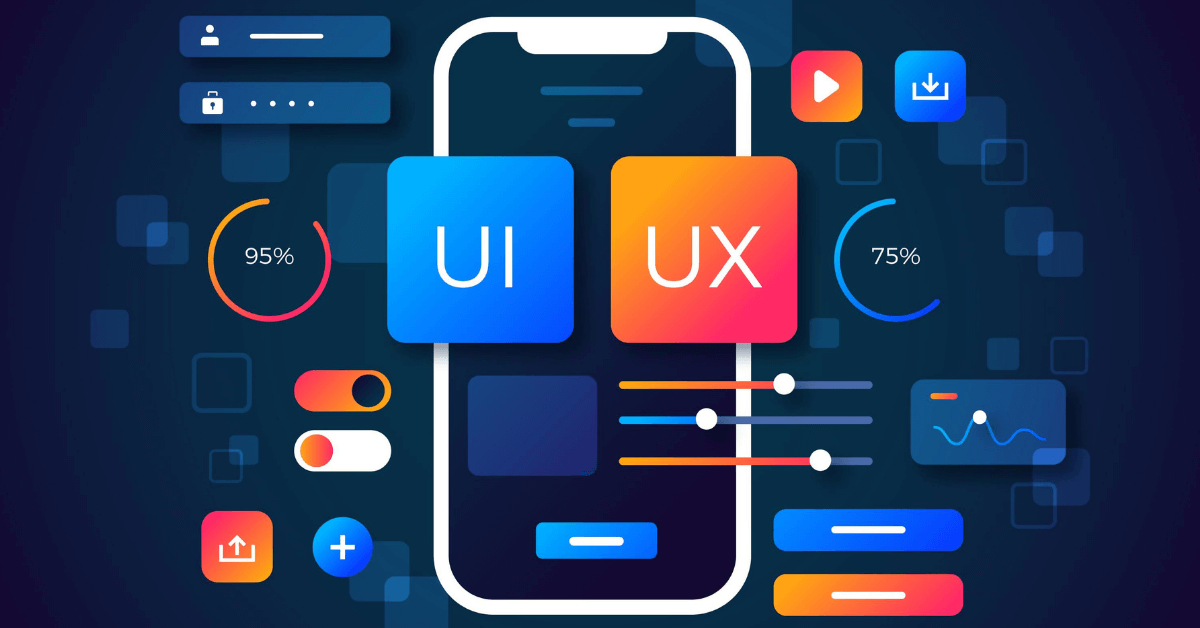Wondering what is the difference between a UX designer vs UI designer? Then you have landed at the right place. In today’s fast-paced and ever-evolving digital landscape, the success of any product or service often hinges on the quality of the user experience it offers. User Experience (UX) and User Interface (UI) design have emerged as pivotal components in creating digital experiences that captivate, engage, and retain users.
In this digital era, where smartphones, websites, apps, and other digital interfaces have become an integral part of our daily lives, the importance of UX and UI design cannot be overstated. These two disciplines are at the forefront of designing products and platforms that are aesthetically pleasing, highly functional, intuitive, and user-centric.
Defining UX Design and Its Role
User Experience (UX) design is a fundamental discipline in the field of digital product development. We’ll delve into the essence of UX design, its core responsibilities, and the overarching goal of creating exceptional user experiences.
What is UX Design?
At its core, UX design is all about crafting meaningful and seamless interactions between users and digital products or services. It encompasses the entire user journey, from the first encounter with a product to the ongoing relationship that follows. UX designers are dedicated to making this journey as pleasant, efficient, and satisfying as possible.
In more technical terms, UX design involves a deep understanding of user behaviors, needs, and motivations. It seeks to bridge the gap between user expectations and the product’s functionality. UX designers aim to create products that are not just easy to use but also provide value and delight to users.
Related Article: What is a UI UX Designer?
The Core Responsibilities of a UX Designer
UX designers wear many hats throughout the product development process. Their responsibilities include:
- User Research: Conduct research to understand the target audience, their needs, pain points, and goals. This often involves surveys, interviews, and usability testing.
- Information Architecture: Organizing and structuring the content and functionality of a product to ensure logical navigation and findability.
- Wireframing and Prototyping: Creating wireframes and prototypes to visualize the product’s layout and functionality before development begins.
- Usability Testing: Conducting tests with real users to identify usability issues and gather feedback for improvement.
- Interaction Design: Defining how users interact with the product, including the design of buttons, forms, and other interactive elements.
- Visual Design Collaboration: Collaborating with UI designers to ensure the visual elements align with the overall user experience.
- Iterative Design: Continuously refining and improving the user experience based on user feedback and data.
The Goal of UX Design: Creating Exceptional User Experiences
The ultimate goal of UX design is to create exceptional user experiences. An exceptional user experience is one that leaves users satisfied, engaged, and eager to return. It’s an experience that not only meets but exceeds user expectations.
Exceptional user experiences are characterized by:
- Usability: Products are easy to learn and use, allowing users to accomplish tasks efficiently.
- Utility: Products fulfill a need or solve a problem for users, providing real value.
- Desirability: Products are aesthetically pleasing and enjoyable to use.
- Accessibility: Products are inclusive and cater to a diverse range of users, including those with disabilities.
- Consistency: Products maintain a consistent look and feel across different devices and interactions.
- Emotion: Products evoke positive emotions and leave a lasting impression on users.
Defining UI Design and Its Role
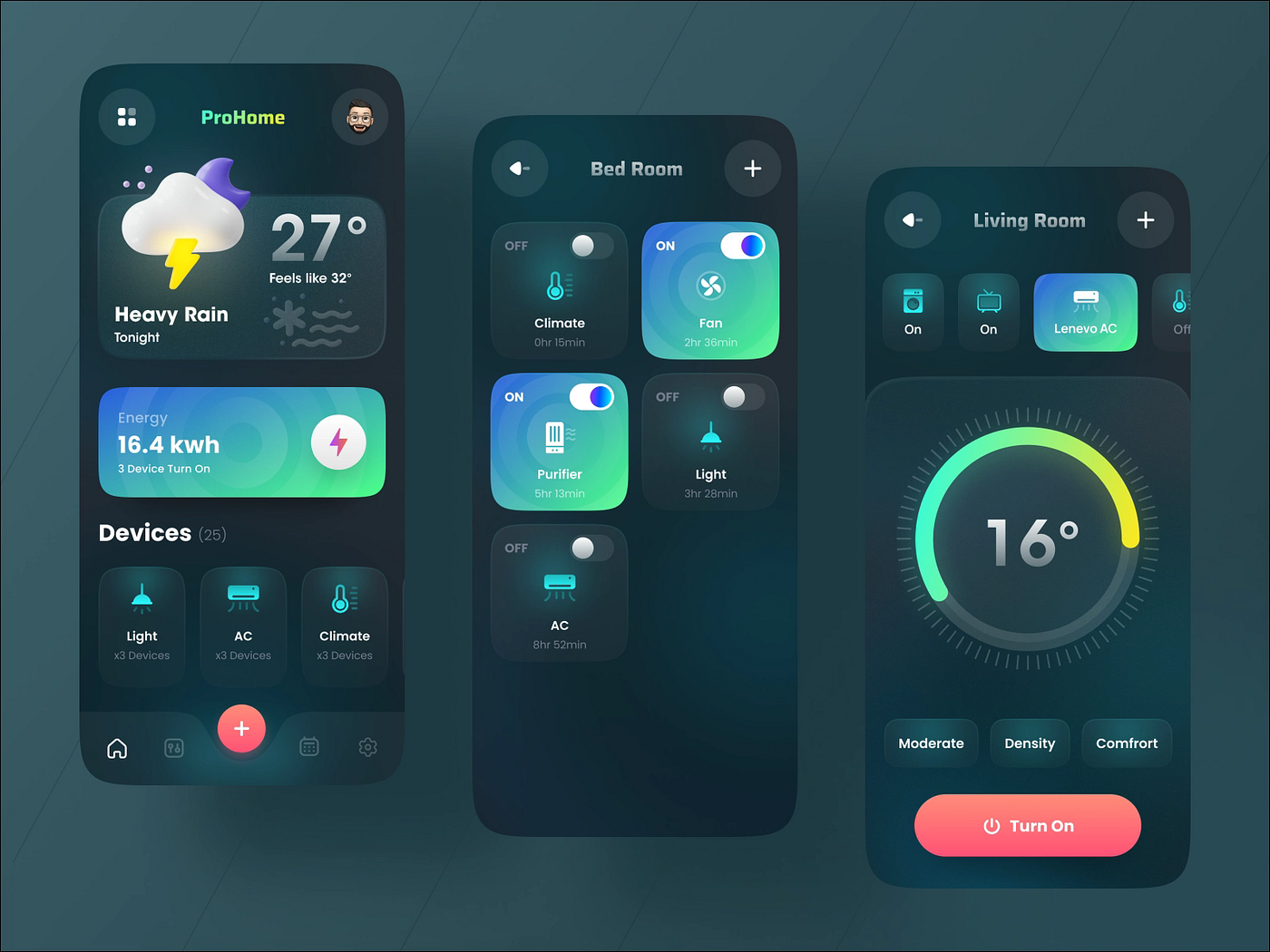
User Interface (UI) design is a critical aspect of digital product development, focusing on the visual and interactive elements that users interact with. We’ll explore the essence of UI design, the core responsibilities of UI designers, and the overarching goal of crafting user-friendly interfaces.
What is UI Design?
User Interface (UI) design is the discipline concerned with designing the visual aspects of a digital product or service. It encompasses everything that users see, touch, and interact with on their screens. UI designers are responsible for creating interfaces that are not only aesthetically appealing but also intuitive and user-friendly.
UI design involves:
- Layout Design: Arranging elements on the screen in a way that is visually pleasing and logical.
- Typography: Choosing fonts and text styles that enhance readability and convey information effectively.
- Color Schemes: Selecting color palettes that align with the brand identity and create a visually cohesive experience.
- Visual Elements: Designing icons, buttons, images, and other graphical elements to enhance the overall look and feel.
- Responsive Design: Ensuring that the interface works seamlessly across various devices and screen sizes.
- Interactive Design: Designing how users interact with elements like buttons, forms, and navigation menus.
- Feedback and Animation: Implementing feedback mechanisms and animations to provide guidance and enhance the user experience.
Related Article: What is UI UX Design?
The Core Responsibilities of a UI Designer
UI designers play a pivotal role in ensuring that a product’s visual and interactive aspects resonate with the target audience. Their responsibilities include:
- Visual Design: Creating visually appealing and consistent design elements that align with the product’s brand and purpose.
- Prototyping: Building interactive prototypes or mockups to visualize how the interface will work.
- Collaboration with UX Designers: Working closely with UX designers to ensure that the visual design complements the user experience.
- Design Guidelines: Developing and maintaining design guidelines or style guides to maintain consistency across the product.
- User Testing: Gathering user feedback on the visual aspects of the interface and making necessary improvements.
- Accessibility: Ensuring that the design is accessible to all users, including those with disabilities.
Related Article: UI UX Developer Skills
The Goal of UI Design: Crafting User-Friendly Interfaces
The primary goal of UI design is to craft user-friendly interfaces that enhance the overall user experience. User-friendly interfaces are characterized by:
- Intuitiveness: Users can easily understand how to interact with the interface without confusion or frustration.
- Clarity: Information is presented clearly and concisely, making it easy for users to find what they need.
- Consistency: The design maintains a consistent look and behavior throughout the product.
- Aesthetics: The interface is visually pleasing, reinforcing the brand identity and leaving a positive impression.
- Efficiency: Users can complete tasks quickly and efficiently, minimizing the learning curve.
Key Differences Between UX Designer vs. UI Designer
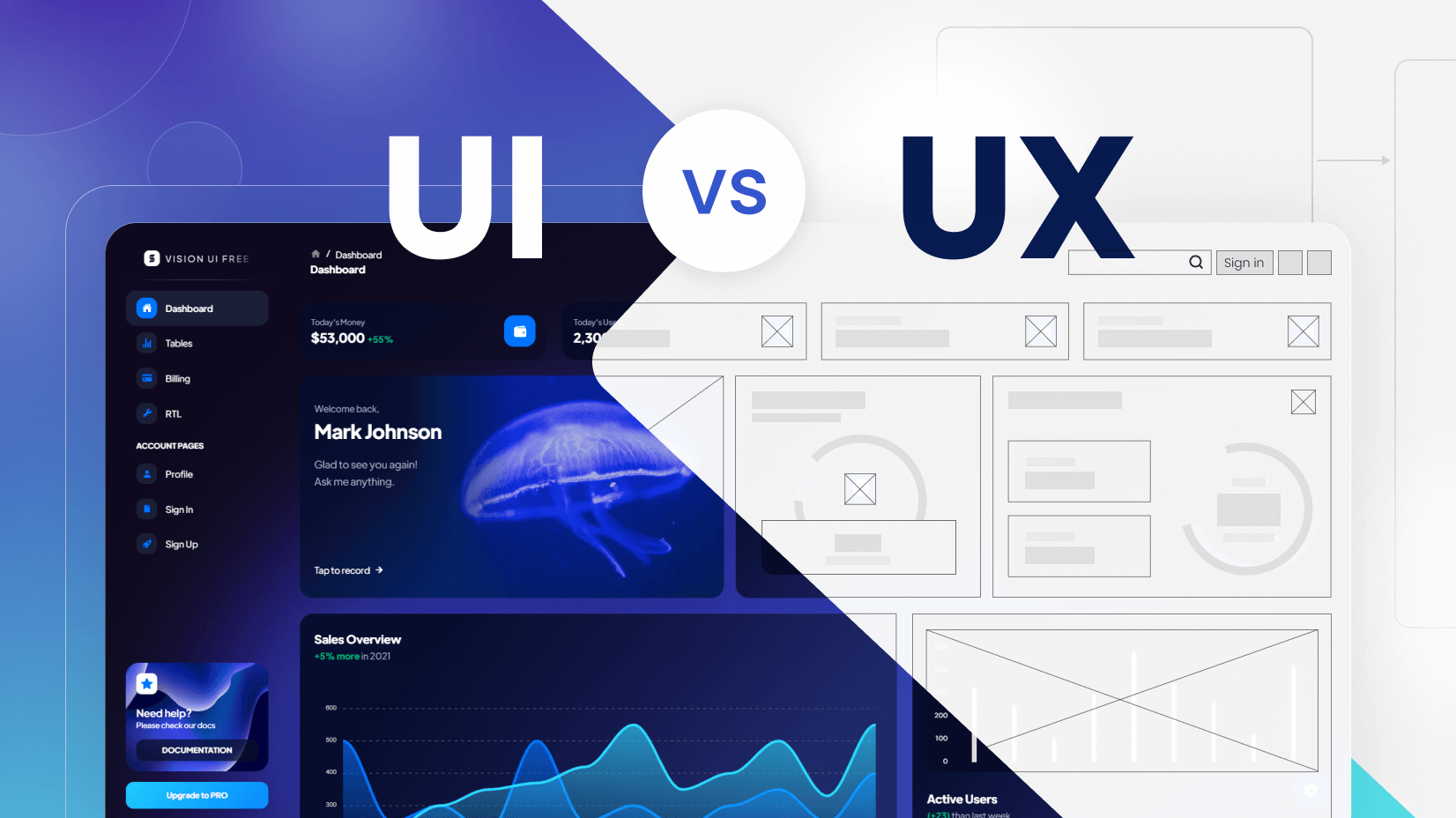
We will explore the fundamental distinctions between User Experience (UX) design and User Interface (UI) design. While these two disciplines are closely related, they have distinct focuses, skill sets, collaborative approaches, and deliverables.
The Focus Areas: User Experience vs. User Interface
User Experience (UX) Design:
- Focus: UX design centers on the overall experience a user has with a product or service.
- Objective: To ensure that users find value in the product, have a seamless journey, and accomplish their goals.
- Emphasis: Understanding user behavior, conducting research, creating user personas, and optimizing the user journey.
User Interface (UI) Design:
- Focus: UI design concentrates on the visual and interactive aspects of the product, specifically the elements users directly interact with.
- Objective: To create an aesthetically pleasing and intuitive interface that aligns with the brand’s identity.
- Emphasis: Typography, color schemes, iconography, layout, and interactive elements.
Skill Sets: Analytical vs. Visual
User Experience (UX) Design:
- Skill Set: UX designers often possess analytical and research-oriented skills.
- Competencies: User research, usability testing, information architecture, wireframing, and prototyping.
- Objective: To optimize the user journey based on data-driven insights and user behavior analysis.
User Interface (UI) Design:
- Skill Set: UI designers primarily possess visual and creative skills.
- Competencies: Graphic design, visual communication, typography, color theory, and responsive design.
- Objective: To create visually appealing and user-friendly interfaces that communicate effectively.
Collaboration: Working with Different Teams
User Experience (UX) Design:
- Collaboration: UX designers collaborate closely with researchers, product managers, and UI designers.
- Interaction: They bridge the gap between user research insights and the visual design implemented by UI designers.
- Objective: To ensure that the product aligns with user needs and expectations.
User Interface (UI) Design:
- Collaboration: UI designers work closely with UX designers, graphic designers, and developers.
- Interaction: They bring the visual and interactive elements of the product to life based on UX design principles.
- Objective: To translate UX design concepts into a visually appealing and functional interface.
Deliverables: Wireframes, Prototypes, and Visual Design
User Experience (UX) Design:
- Deliverables: UX designers produce wireframes, prototypes, user personas, user journey maps, and usability reports.
- Purpose: These deliverables help in user testing, validating design decisions, and optimizing the user experience.
User Interface (UI) Design:
- Deliverables: UI designers create visual mockups, style guides, icon sets, and design assets.
- Purpose: These deliverables guide developers in implementing the visual aspects of the interface and maintaining design consistency.
Related Article: Low Fidelity vs. High Fidelity Prototypes
The Collaborative Relationship Between UX Designer vs. UI Designer
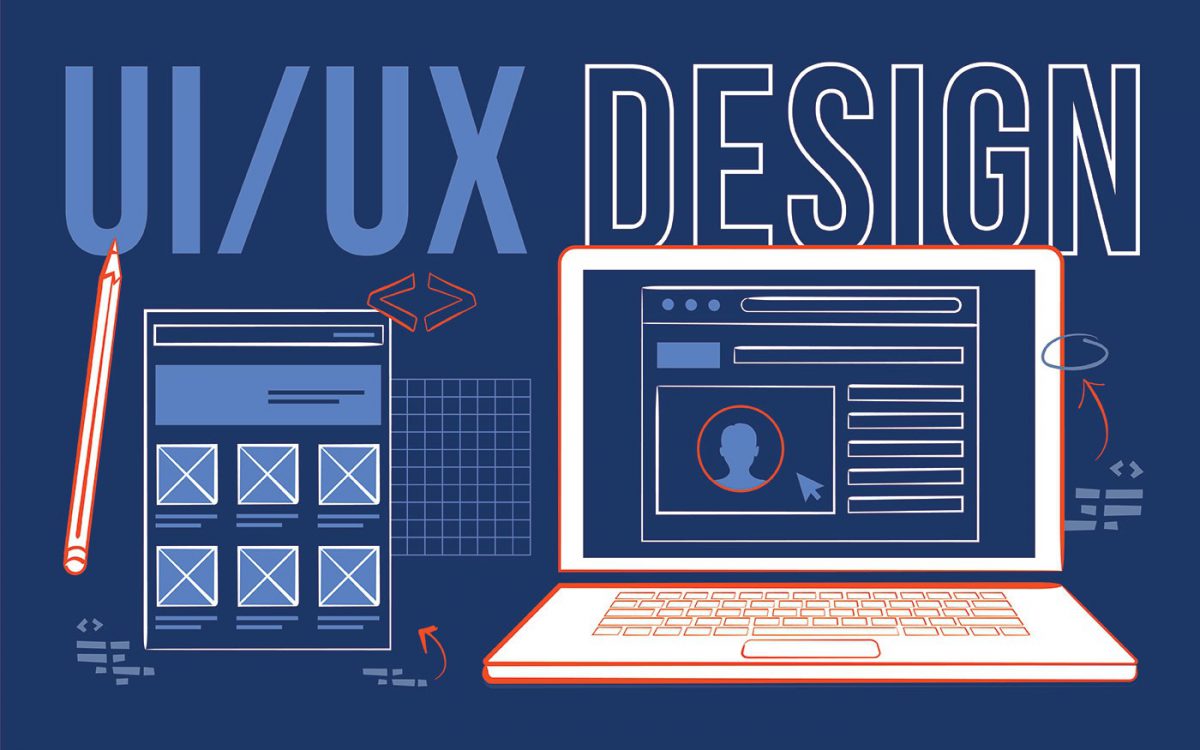
We’ll explore the symbiotic relationship between User Experience (UX) designers and User Interface (UI) designers. They may have distinct roles and responsibilities, but their collaboration is crucial for creating exceptional digital products. We’ll delve into how they work together effectively and provide real-world examples of their successful synergy.
How UX Designer vs. UI Designer Work Together
The collaboration between UX and UI designers is akin to a well-choreographed dance, where each partner’s steps complement the other’s. Here’s how they work together:
- Shared Understanding: Both UX and UI designers begin by gaining a shared understanding of the project’s goals, target audience, and user needs. They often collaborate with product managers and stakeholders to gather insights.
- UX Drives Strategy: UX designers typically take the lead in defining the overall user experience strategy. They conduct user research, create personas, and develop user journeys that serve as the foundation for the project.
- Wireframing and Prototyping: Once the UX designer has outlined the user journey, UI designers step in to create wireframes and prototypes. These visual representations help refine the user interface’s layout and functionality.
- Feedback Loops: Throughout the design process, UX and UI designers engage in constant feedback loops. UX designers ensure that the user journey aligns with the user’s goals, while UI designers provide input on the visual elements and aesthetics.
- Consistency and Branding: UI designers maintain consistency in visual design by adhering to established style guides and brand guidelines. This consistency reinforces the user experience.
- Usability Testing: UX designers often lead usability testing sessions to gather user feedback. UI designers may attend to observe how users interact with the visual elements and gather insights into potential improvements.
- Iterative Design: Both UX and UI designers embrace an iterative approach. They make refinements based on user feedback and evolving project requirements, working in tandem to enhance the overall experience.
Achieving Synergy: Real-World Examples
Let’s explore some real-world examples of how the collaborative efforts of UX and UI designers have led to successful digital products:
Example 1: Airbnb
- UX Design: Airbnb’s UX designers focus on understanding the diverse needs of travelers and hosts, ensuring that the platform provides a seamless booking experience.
- UI Design: UI designers create visually appealing listing pages, intuitive search filters, and a consistent interface, enhancing the trust and usability of the platform.
Example 2: Apple
- UX Design: Apple’s UX designers concentrate on crafting user-centered ecosystems across devices, ensuring a consistent and enjoyable user experience.
- UI Design: UI designers implement Apple’s distinct visual style and layout, creating recognizable icons, responsive interfaces, and a cohesive design language across products.
Related Article: UI vs. UX
Conclusion
Whether you’re a budding designer looking to embark on a career in UX or UI design, a product manager seeking to understand these roles better, or simply someone curious about the world of digital design, it’s clear that UX and UI design are at the heart of creating products and services that resonate with users.
As we conclude this UX designer vs. UI designer journey, remember that UX and UI design are dynamic fields constantly evolving alongside technology and user preferences. Whether you choose the analytical path of a UX designer or the visual journey of a UI designer, you’ll be at the forefront of shaping the digital experiences of tomorrow.
Stay curious, keep learning, and continue to explore the exciting and ever-changing world of UX and UI design. The possibilities are limitless, and the impact you can make is boundless. Thank you for joining us on this enlightening journey.
New to the design world? Our mobile app design agency can help you turn your ideas into engaging designs.

